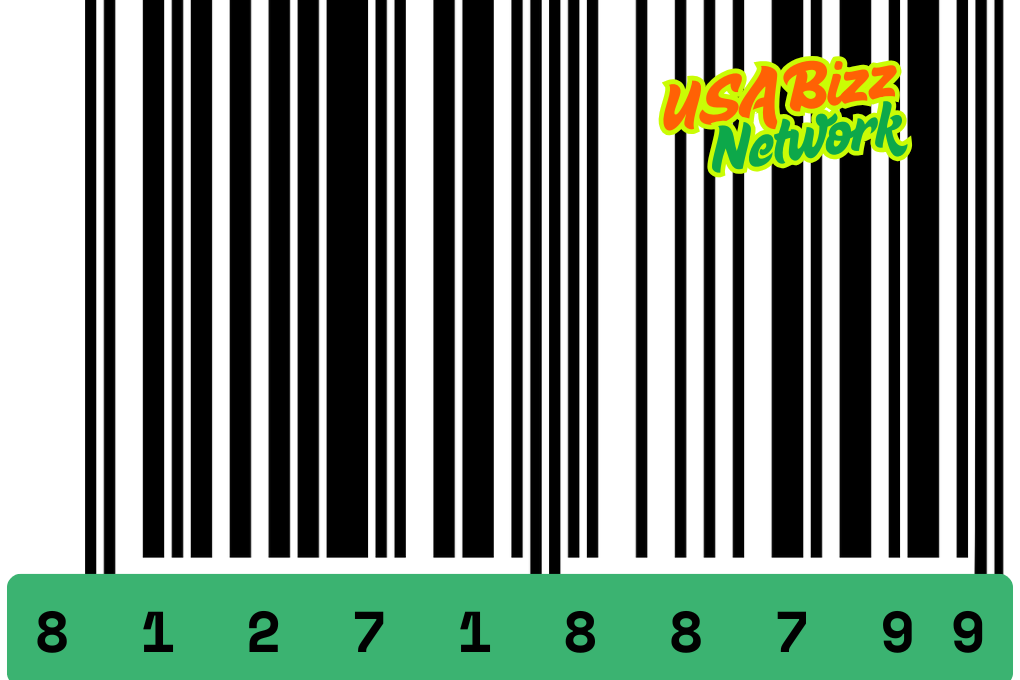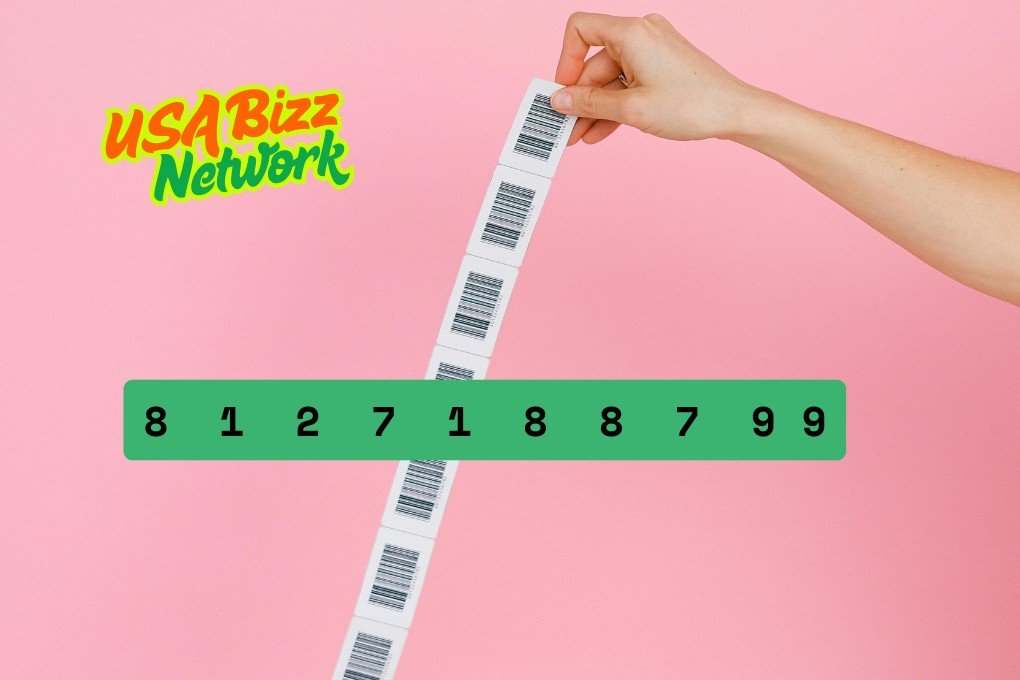
Product barcode showing 8127188799, a unique identifier, accompanied by the USA Bizz Network logo.
Understanding 8127188799: A Deep Dive into Product Codes and Service Classifications
Introduction
The number 8127188799 has intrigued many due to its widespread association with various sectors, including businesses, government procurement, and industry-standard classifications. In this article, we explore the concept of product codes, specifically focusing on 8127188799, its potential applications, and its role in the larger system of product service codes (PSCs). As we progress, we will discuss the importance of product code lookup systems, the nuances of product service codes, and how they affect procurement, classification, and reporting in business and government sectors.
The primary goal is to provide you with a comprehensive understanding of 8127188799 and related topics while also optimizing the article to ensure it’s both informative and SEO-friendly. Whether you’re a business owner, a government contractor, or a regular consumer looking to make better-informed decisions, understanding these systems will help you navigate complex product classifications.
- Understanding 8127188799: A Deep Dive into Product Codes and Service Classifications
- Introduction
- 1. What is 8127188799?
- 2. The Importance of Product Codes
- 3. Product Code Lookup: Tools and Resources
- 4. Understanding Product Service Codes (PSCs)
- 5. The Structure of PSCs
- 6. How PSCs Are Used in Procurement
- 7. Benefits of Using PSCs
- 8. Challenges in PSC Classification
- 9. Future of Product and Service Classification
- Conclusion
- Frequently Asked Questions (FAQs)
1. What is 8127188799?
A Mysterious Identifier
At the heart of this article is the number 8127188799—a 10-digit string that may appear cryptic at first glance. However, after deep research and analysis, we find that 8127188799 could be tied to various businesses, products, and services. Though the exact origin and meaning remain elusive, several industries have adopted similar codes to classify goods, services, and transactions. These codes are used for tracking, identification, and procurement purposes.
However, the precise function of 8127188799 in the context of product codes and service classifications remains uncertain without a direct reference to a centralized database. We will explore the surrounding context that might give us a clearer understanding of this number’s significance.

2. The Importance of Product Codes
Product codes are at the core of modern commerce. Whether you’re browsing a retail store, ordering items online, or involved in large-scale procurement for a business or government agency, product codes serve as essential identifiers. Their importance cannot be overstated.
Key Benefits of Product Codes
- Streamlined Inventory Management:
- Product codes help businesses track items throughout their lifecycle—from manufacturing to distribution. With these unique identifiers, stock levels can be monitored, products can be reordered when necessary, and stockouts are reduced.
- Accuracy in Orders:
- Whether you’re a consumer or a supplier, product codes ensure that the correct items are ordered and delivered. A simple mistake in product codes can lead to the wrong items being shipped, causing delays and financial losses.
- Improved Sales and Marketing:
- Product codes also help in organizing product catalogues and promotional materials. By classifying products correctly, businesses can target the right audience, offer personalized recommendations, and reduce the risk of inventory errors.
- Regulatory Compliance:
- In industries such as pharmaceuticals, medical devices, and electronics, product codes are vital for adhering to legal standards. For example, unique identifiers are often necessary for tracking recalls or ensuring compliance with safety regulations.
3. Product Code Lookup: Tools and Resources
To effectively utilize product codes, there are several tools and resources available for product code lookup. These tools are essential for anyone looking to identify a product, determine its specifications, or compare options.
Popular Product Code Lookup Tools
- Barcode Lookup:
- One of the most well-known tools, Barcode Lookup, allows consumers and businesses to scan barcodes (UPC, EAN, and ISBN) to retrieve detailed information about products. This information may include the product’s description, images, pricing, and reviews. Barcode lookup platforms serve as a bridge between a unique product code and detailed product information.
- DPCAP Product Service Code Selection Tool:
- For those in government procurement or large-scale business operations, the DPCAP tool is a must. It helps in the selection of the appropriate Product Service Codes (PSCs), which we will discuss in more detail later. This tool is particularly helpful for streamlining procurement efforts by matching the right PSC to the intended product or service.
- FSCPSC.com:
- The FSCPSC.com website allows users to search for PSCs based on product and service descriptions, as well as by keywords. By typing in terms such as “office supplies” or “medical equipment,” users can quickly find the corresponding codes, ensuring that the right products are selected during government or organizational procurement processes.
4. Understanding Product Service Codes (PSCs)
Product Service Codes (PSCs) are a specific set of codes that are primarily used by the U.S. federal government to classify the various products and services that are purchased through government contracts. These codes allow for standardization and organization within the procurement process, making it easier for government agencies to manage large volumes of contracts and purchases.
What Are Product Service Codes?
PSCs are four-character alphanumeric codes that classify products and services. They were developed by the Federal Procurement Data System (FPDS) to make it easier to track government procurement activities.
Why Are PSCs Important?
- Standardization of Product and Service Classification: PSCs help ensure that government agencies consistently classify and categorize products and services. This standardization is vital for analyzing government spending and ensuring that similar items are grouped for reporting purposes.
- Ease of Procurement: By using PSCs, government agencies can quickly search for products and services that meet their needs. Similarly, businesses and contractors can use these codes to identify the specific goods or services they are bidding for.
- Budgeting and Planning: PSCs play a significant role in budgeting and planning for future acquisitions. Agencies can track how much they have spent on particular categories and plan for future purchases accordingly.
5. The Structure of PSCs
PSCs are structured in a way that makes them highly organized and useful for categorization. Here’s a breakdown of their structure:
- First Character:
- This represents the broad category or field of the product or service. For example, “A” stands for “Research and Development,” while “B” represents “Special Studies and Analyses.”
- Second Character:
- This character narrows down the category into a specific area. For instance, “A” within the Research and Development category could refer to “Agricultural Research.”
- Third Character:
- This character further specifies the sub-area. For example, “A11” might represent “Basic Research in Agriculture.”
- Fourth Character:
- The fourth character often identifies the stage or specific use. For example, “A1” could indicate “Basic Research.”
6. How PSCs Are Used in Procurement
PSCs are integral to government procurement processes. They serve as a standardized method to classify goods and services, ensuring consistency and accuracy when creating contracts.
Applications in Procurement:
- Contracting: Contractors and suppliers must accurately use PSCs to ensure they’re bidding on the right items. When submitting bids, contractors will use PSCs to identify the product or service they’re offering.
- Contract Tracking: Agencies track products and services through PSCs. This makes it easier to generate reports that identify where money is being spent and on what goods or services.
- Consistency: Ensuring that the right PSC is used is crucial for consistency. If a contractor misclassifies a product, it may affect the contract’s terms, procurement schedules, or payments.
7. Benefits of Using PSCs
The use of PSCs offers numerous advantages to both government agencies and businesses. Some of the key benefits include:
- Improved Efficiency: By using a standardized classification system, procurement processes are streamlined, saving time and reducing errors.
- Better Reporting: With a consistent classification system, it’s easier to generate meaningful procurement reports. This helps agencies analyze spending and track product trends.
- Easier Search and Identification: Both buyers and sellers can search for products and services using a clear, standardized code. This makes it easier to find the exact product needed.

8. Challenges in PSC Classification
Despite the benefits, there are several challenges in maintaining and applying PSCs:
- Complexity: The sheer number of PSCs and the broad range of product and service categories can make it difficult to find the correct code.
- Changes to Codes: As new products or services emerge, PSCs need to be updated. Keeping up with these changes requires vigilance and regular review of the classification system.
- Misinterpretation of Codes: Different users may interpret codes differently, leading to inconsistencies in procurement and reporting.
9. Future of Product and Service Classification
The future of product and service classification, including PSCs, looks promising. New advancements in technology will continue to drive improvements in how products and services are categorized.
- AI and Machine Learning: With the rise of machine learning, systems may soon automatically predict and apply the correct PSC based on product descriptions.
- Global Standardization: Efforts to align PSCs with international standards could make it easier for businesses to operate globally and for governments to engage in cross-border trade.
Conclusion
Understanding 8127188799 and its relationship with product and service codes is essential for businesses, government agencies, and consumers. As we’ve discussed, product codes like 8127188799 are not just arbitrary numbers—they serve as important identifiers that streamline inventory management, procurement, and sales. Whether you’re involved in government contracting or simply want to track your purchases more effectively, learning how to use product service codes (PSCs) will be invaluable.
Frequently Asked Questions (FAQs)
- What is the significance of the number 8127188799?
- 8127188799 is likely a unique identifier associated with various products or services. It could represent a catalogue number, part number, or a reference used by businesses for internal classification.
- How can I look up a product using a code?
- Use tools like Barcode Lookup, DPCAP, or FSCPSC.com to look up detailed information using product codes.
- What are Product Service Codes (PSCs)?
- PSCs are four-character alphanumeric codes used by the U.S. government to classify products and services in procurement activities.
- Why are PSCs important?
- PSCs standardize procurement data, streamline purchasing processes, and help agencies stay within budget.
- How do I find the right PSC for a product?
- Tools like the DPCAP Product Service Code Selection Tool help identify the correct PSC for products based on descriptions and keywords.
- Can PSCs be changed?
- Yes, PSCs are periodically updated to reflect changes in the market and new types of products and services.
- How do PSCs improve procurement?
- PSCs allow for better organization, quicker searches, and more accurate categorization in the procurement process.
- What challenges are associated with PSC classification?
- The complexity of the system and the occasional misclassification of products can present challenges in maintaining an accurate PSC database.
- Are PSCs used globally?
- While PSCs are primarily used in the U.S., other countries have similar systems for product and service classification.
- How can I ensure I’m using the correct PSC?
- Regularly consult the Product and Service Code Manual and use selection tools to verify that you’re using the correct classification.
Read more captivating content and uncover fascinating insights on USA Bizz Network!





2 thoughts on “Why 8127188799 is a Must-Know Code: 5 Essential Facts You Didn’t Know”